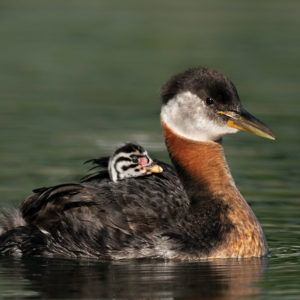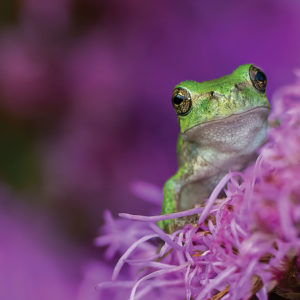The Forest Singers!
These beautiful songbirds are some of the lucky ones when it comes to escaping the brutal winters of Canada. Baltimore orioles separate their seasons in two different climates. During the months of April and May, they can be spotted in Alberta, Saskatchewan, Manitoba and Eastern Ontario. In July they leave and make their way towards Florida for winter! They sing beautiful songs and sport magnificent vibrant colours, which helps make them a favourite among bird watchers.
What Makes Them Different?
Baltimore orioles are not only known for their colourful plumage and pleasing song, they’re also known as the official bird of the state of Maryland. In fact, the city of Baltimore adopted the name Orioles for their professional baseball team over a hundred years ago.
Adult male Baltimore orioles are flame-orange on their front and back and have black and white on their wings and head. Adult females and growing males have yellow-orange on the breast, a grayish head and two white lines on their wings. Male orioles only get their bright orange coat once they reach the fall in their second year.
If you’re on the lookout for Baltimore orioles, you’ll most likely hear them before you see them. Males have a flute-toned voice and sing all throughout the summer. Females, however, have a shorter and simpler song. They tend to stay high up in the trees while searching for their food. They like to be in the open and avoid deep forests. Their diet consists of small branches, bugs and fruit. They play a key role in forest ecosystems. By eating caterpillars like tent, tussock and spiny elm, it prevents pests from destroying forests and keeps them protected. Did you know that Baltimore orioles eat only dark fruit? Even if they find the ripest green grapes and yellow cherries, they won’t even consider eating them.
Tips for the Backyard
If you want to try and see Baltimore orioles in your own backyard, here are a few tips to help attract them!
- Avoid using pesticides in your yard because this could risk the chance of killing their main source of food.
- Place oranges and banana pieces on your feeders. You can even put out a small quantity of jelly for these nectar eating birds (just don’t put too much out because it could risk ruining their feathers).
- Plant different trees and flowers such as raspberry, crabapples and nectar-bearing flowers to attract them year after year!
With the change of season and the warm weather rolling around, perhaps this will be the summer that Baltimore orioles come visit your yard!



